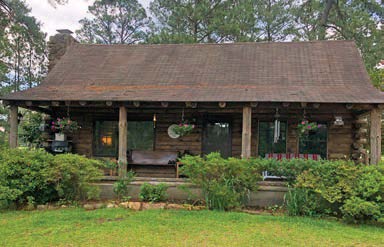SOME KIND OF TERRIFIC
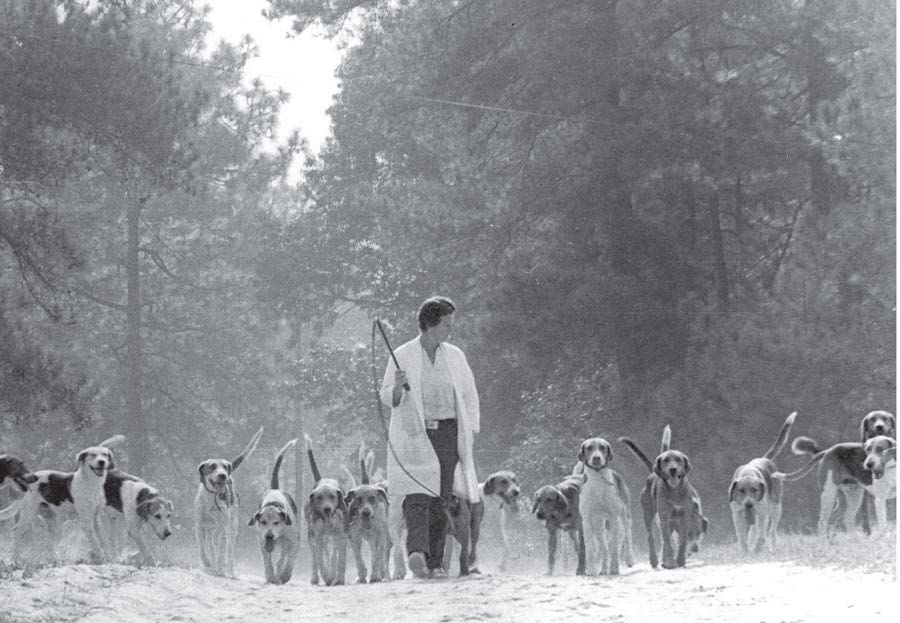
Some Kind of Terrific
The many odysseys of Wiffi Smith
By Bill Case
My compulsion started in the late 1950s, around age 9. I’d spring out of bed and bolt to the front door where our daily newspaper, the Cleveland Plain Dealer, awaited. I’d grab the sports section and absorb its contents, especially baseball and golf. When it came to the statistics, no pitcher’s earned run average or touring pro’s also-ran fi nish was too obscure to escape my attention.
I not only studied the results of PGA Tour events, but also those of the Ladies Professional Golf Association. Mickey Wright, Betsy Rawls and Marlene Bauer Hagge were among the LPGA stalwarts I became familiar with, all eventually inducted into the World Golf Hall of Fame.
I also recollect Plain Dealer accounts concerning another LPGA player of that era, Wiffi Smith, whose tournament successes from 1957-1960 rivaled those of her legendary contemporaries. She won eight LPGA tournaments before turning 24 — the same number Jack Nicklaus would win on the PGA Tour by that age though, in fairness, Jack’s victories included three major championships. I remember photos of a smiling, and often victorious, Smith. Sturdily built with curly auburn hair, Wiffi ’s friendly freckled face stuck in my memory bank.
Mentions of Smith abruptly disappeared from the sports pages around 1960. She was little more than a distant memory when I began research for a story involving the Moore County Hounds. In the process of delving into the archives of The Pilot, the name Wiffi Smith kept popping up in stories from 1963 to 1981.
A 1976 Pilot story confi rmed the woman in question was golf’s, and my own, missing Wiffi . “Behind the continuing reputation of the Moore County Hounds,” wrote Mildred Allen, “is a champion among champions — Wiffi Smith, who after winning her place in the golfi ng world before permanently damaging her left hand in a minor accident in 1959, found a second love when Mrs. Ginnie Moss invited her to manage the kennels and become Second Whip for MCH.”
Allen’s piece described Smith’s myriad duties at Mile-Away Farm, MCH’s home. Arriving at daybreak, she pitched hay, mucked stalls, personally trained the hounds and, once hunting season was underway, saw to it (as whipper-in) that the hounds, when afield, remembered “what Wiffi Smith . . . has taught them.” Wiffi was quoted as saying, in training the hounds, “Love is basic to discipline. They’ve got to love you enough to do what you ask of them or demand of them.”
Another Pilot article, this time from 1981, reported that Smith was leaving her position as “kennel huntsman” at MCH and returning “to her first love — golf.” She would be offering private lessons and “three-day intensive golfing seminars.” It was not an entirely new gig for Smith. During her tenure at MCH, she moonlighted at Pine Needles Lodge and Golf Club, giving lessons to women in Peggy Kirk Bell’s Golfaris.
Smith’s segue from championship golfer to foxhunting maven and back to golf teacher had the makings of a fine story, but she was long gone from Moore County. An internet search yielded a 2005 blurb identifying Smith as a golf instructor in Darrington, Washington. Efforts to locate her there were fruitless. Moreover, the commonness of her given name, Margaret C. Smith, rendered directory searches a hopeless endeavor.
Finally, a circuitous route involving the MCH’s current whipper-in, Mel Wyatt — who said Smith is fondly remembered in MCH circles —and a veteran MCH member, Leonard Short, produced a telephone number in Edgewood, New Mexico, where the 87-year-old now resides with her younger brother, Latimer Smith Jr., and his wife.
In several phone conversations, Smith engagingly reminisced about her life, a mostly fun-loving and joyous ride, from her perspective. “But what about the injury to your hand that derailed what could have been a Hall of Fame golf career?” I asked. “That can’t be a happy memory.”
“I wasn’t happy about it,” Smith said, “but it led to great times in Southern Pines with the hounds, Pappy and Ginnie Moss, and the Bell family. It was a wonderful time to be in Southern Pines. When things happened in my life that sent me in a different direction, it has led to something wonderful.”
Smith’s attitude regarding life’s curveballs is a trait shared with her mother. Mary Decker Smith was a brilliant woman of many talents — architect, librarian, artist, naval navigator and sportswoman. While married to Latimer Smith Sr., and living in Redlands, California, she was employed as a librarian at Vandenberg Air Force Base. Later, she would serve her country in seemingly more clandestine employments in Mexico, England and Spain. Wiffi is uncertain as to her mother’s precise role in these foreign assignments but suspects her stint in Mexico involved keeping tabs on former Third Reich military officers who hurriedly relocated to that country in the aftermath of World War II.
This international woman of mystery was a vagabond whose adventurous avocations took her far from home. While Latimer Sr., employed as a designer of airplane parts, stayed behind at the couple’s home in Redlands, Mary pursued a special interest in ancient Central and South American civilizations, visiting ruins accompanied by archaeologically minded friends who shared the same passion. During a 1936 excursion to a remote village, Mary encountered a tribal healer who, after poking her midsection, exclaimed “Wiffi!” which, in the tribe’s dialect, meant “something is coming.” The healer proved prescient. That “something” was Margaret C. Smith (aka “Wiffi”), who arrived that September.
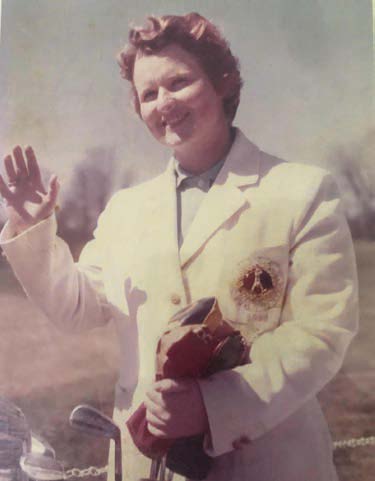
Latimer and Mary’s marriage ended in divorce when Wiffi was 11. Mary and the children left Redlands and moved to Guadalajara, Mexico, where the pre-teen Wiffi learned Spanish in short order. “At one time, I was fluent in three languages (English, Spanish and French). Now I can’t speak any of them,” she says with a chuckle.
The young Smith relished riding horses, playing piano and taking ballet. She excelled in all sports, and dreamed of emulating the accomplishments of Babe Didrickson Zaharias, one of the greatest female athletes in history. She took up tennis, but it proved frustrating finding competition in Guadalajara. Mary suggested Wiffi try her hand at golf, a game she could always play by herself. Moreover, golf aptitude was in the family genes. Latimer Sr. had once entertained the notion of turning professional. After
Mary joined the Guadalajara Country Club, Wiffi, by then 14, took up the game in earnest.
Within a year she was shooting close to par. She wasn’t just good; she was long. Generating power from her solid 5-foot, 6-inch, 160-pound frame, Wiffi could smash her driver 265 yards. At 16, she entered the 1953 Mexican Women’s Amateur and won going away, routing her opponent, Luz de Lourdes, 7 and 6 in the finals. Later that summer, she won low amateur laurels at the World Championship of Golf in Chicago, where she met her idol Zaharias, then made a major splash by reaching the semifinals of the U.S. Women’s Amateur.
Despite this early success, Smith’s short game, by her own admission, lacked finesse. To address this deficiency, she took lessons from renowned teacher and two-time PGA champion Paul Runyan in Pasadena. “He told me to hit some pitch shots to the right side of the green, and make them bounce left toward the pin, and vice-versa,” recalls Smith. “I couldn’t make my pitches bounce the way he wanted so I said, ‘Let me watch you.’” After Runyan hit a few shots, all of which bounced in the desired direction, Smith knew what she needed to do. Mimicking the Hall of Famer’s technique, she quickly had the ball bouncing as requested. “He didn’t need to tell me how to do it, I just did it.”
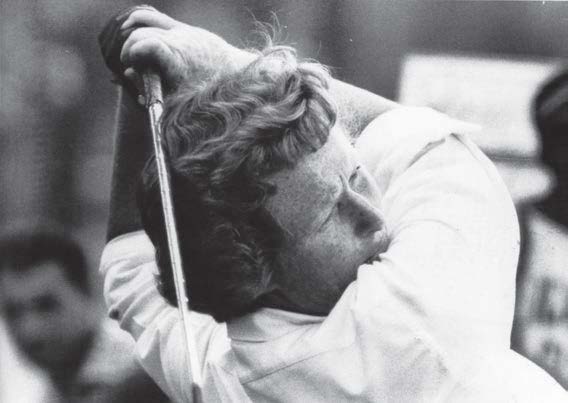
Smith played several important amateur tournaments in the first quarter of 1954, including Pinehurst’s North & South Championship, but her golf development slowed when, along with her mother and brother, she moved to a small cottage in the village of Wincham, England. There were few opportunities to play competitively, but Smith kept her game in shape at nearby Windwhistle Golf Club, a modest nine-hole layout where sheep grazed on the course. Her brother shagged her practice balls.
While Windwhistle was not a memorable test of golf, it did possess scenic beauty. “The course was high up overlooking the countryside. I watched foxhunts down below,” remembers Smith. “I could see the fox, the hounds and the horses, all in full flight.” It would be a harbinger of things to come. Smith did, in fact, enter the Women’s British Amateur in July 1954 and played creditably, winning two matches before bowing to Canadian finalist Marlene Stewart.
Mary instructed her daughter to choose either golf or college. She could afford to subsidize one or the other, but not both. Smith had arrived at a fork in the road. Gaining admission to college appeared an iffy proposition, since Wiffi had not stayed in one place long enough to earn a high school diploma. Motivated by her desire to win the U.S. Junior Girls Championship — the 1954 championship would be her final opportunity to compete in it — she chose golf.
After sailing to America, the teenager blew away the field. Golf World reported that Wiffi “waltzed through four matches, five or more up in each of them.” The magazine labeled her “the greatest traveler among the teenage starlets,” given the fact that in the previous year alone, she had “moved from her home in Guadalajara, Mexico, through Florida, Georgia, the Carolinas, the British Isles and sundry points west, amazing all with her shot-making.”
Among those Smith impressed was Peggy Kirk Bell, who along with husband Warren “Bullet” Bell, the Cosgrove family and Julius Boros, had recently purchased the Pine Needles golf course with the objective of transforming it into a resort property. Peggy Bell provided a helping hand to many talented female golfers, and Smith was among the first beneficiaries. The Bells hired her to work in the office, where her duties left ample time to play with guests and work on her game.
During one practice session at Pine Needles in March 1955, Smith experienced a golfing epiphany that astounds her to this day. “I was hitting 6-iron shots getting ready for the North & South at Pinehurst, when something magical came over me.” Suddenly, it seemed impossible to mishit a shot. “I didn’t exist anymore,” she said. “Somebody else was hitting the ball. It was perfect. Today, they would call it the zone.”
The euphoria carried over to the North & South. Smith played beautifully throughout, beating U.S. Amateur champion Barbara Romack in the semifinal, then cruising to a 3 and 2 victory over Pat Lesser in the championship match. The victory cemented Smith’s status as a top amateur and resulted in her selection to the 1956 United States Curtis Cup team.
The Bells were proud of their 18-year-old protégé and protective of her. They became a second family for the young woman. When the Holden family, owners of the St. Clair Inn in Michigan, hired the Bells to manage their property during the summer of 1955, they brought Smith with them to work in the inn’s office.
During that summer Smith also grew close to the Holden family and babysat for Bob Holden’s children. “Bob was a wonderful man,” she reflects. “His whole family took me in and helped me financially and encouraged me with all my endeavors. I learned to dance in their kitchen.” St. Clair became her new home. Later, when the Holdens sold the inn and built a hotel property in Orange, Texas, Smith moved to the Lone Star State with them.
Playing in the ’56 Curtis Cup proved a godsend. Though the American side was defeated by Great Britain and Ireland at Prince’s Golf Club in County Kent, England, Smith won both of her matches, including a 9 and 8 beatdown of singles opponent Philomena Garvey. The following week she crossed the English Channel to play in the French Amateur and won that, too. Smith capped off her remarkable three-week run by capturing the British Women’s Open Amateur at Sunningdale, dusting her finals opponent Mary Patton Janssen 8 and 7.
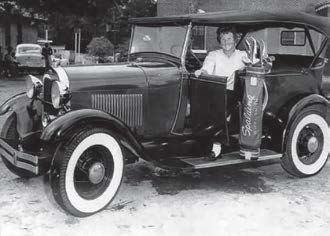
After returning to the States, Smith entered the Trans-Mississippi Amateur held in October at Monterey Peninsula Country Club in Pebble Beach. She won again in lopsided fashion. The highlight for Smith was having her father by her side throughout the tournament. “I loved my dad, but we didn’t get to see each other much,” she says today. “Having him see me win at Monterey meant a lot.”
But for Smith, the memory of this reunion would turn bittersweet. After his lengthy drive home, Latimer Sr. felt ill. The following morning, the 47 year-old was found dead, the victim of an enlarged heart.
The combination of amateur successes and her dad’s death caused Smith, then 20, to consider turning pro and joining the ranks of LPGA Tour players. She announced her intention to leave the amateur ranks and play the LPGA’s 1957 tour schedule. The Bells hooked Smith up with Spalding’s staff of touring pros. “That got me balls, clubs, bags, tees, shag bags and 3,000 bucks,” says Smith.
While lodging with the Bells during the holiday season, Wiffi prepared for life on tour. A priority was finding a car to drive to the first event, the Sea Island Open in Georgia. She became smitten with an ancient auto on display at the local Ford dealership — a 1928 Model A Ford. Told the car was privately owned and not for sale, Smith refused to take no for an answer. She tracked down the flivver’s owner while he was playing a round of golf at Pinehurst No. 3 and bought the auto for $1,000 before he could add up his scorecard.
On the 400-mile drive to Sea Island, the Model A sputtered to a stop in Sumter, South Carolina. The needed distributor parts to repair the antique couldn’t be found, but a resourceful mechanic managed to handcraft a fix for $17. Smith was back on the road. If trusting the roadworthiness of a 30-year-old auto seemed questionable, the incident did gain Smith (and the LPGA) a splash of publicity in Golf World and other publications. It didn’t hurt that she finished fifth in her debut.
Smith was the only rookie to win on tour in ’57, at both the Dallas Open and the United Volunteer Services Open in San Francisco. And she came close to winning three LPGA major events, finishing second to Patty Berg in the Western Open, second again at the LPGA Championship (won by Louise Suggs) and fourth in the Titleholders Championship (Patty Berg won again) at Augusta Country Club.
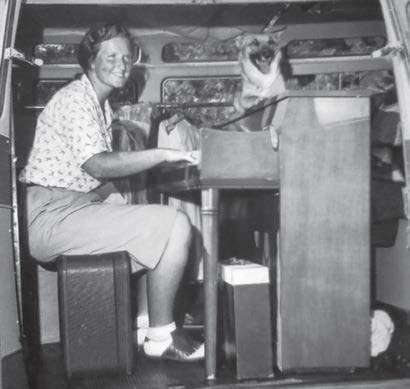
While it’s not unheard of for tour pros of either sex to begrudge the success of a rookie, most of Smith’s contemporaries were charmed by her personality and appreciated her go-for-broke style. “She was something you couldn’t imagine,” recalled Polly Riley. “She’d take chances with shots. We’d think, what on earth? But she’d pull them off. It was almost as if she wanted to see how many situations she could escape from. She was something wonderful.”
Smith’s devil-may-care antics off the course brought smiles to her peers and the public alike. “We’d look up and she’d be walking on her hands, or trotting along on someone’s horse, or at a party sliding down a banister,” said LPGA founding member Betty Jameson. “She was everyone’s young hope, but in the form of a mischievous angel.”
In 1958 Smith captured her third LPGA title at the Peach Blossom Open at Spartanburg Country Club in South Carolina in addition to a pair of top seven finishes in majors. She switched to a more conventional automobile — a Volkswagen bus — but that choice proved a bit quirky, too, when she outfitted it with a piano. She could also play the violin and cello. Another Smith gambit involved the acquisition of Flashy Mike, a parade horse she trailered with her on tour. When Wiffi participated in pre-tournament clinics, she would ride up to the tee on Flashy Mike to the delight of the spectators.
Eventually, the hauling of and caring for Flashy Mike became a distraction, and Wiffi needed a stable for her horse. Peggy Kirk Bell suggested her friends, the Mosses, might be willing to take care of the horse at their Mile-Away Farm outside Southern Pines. Ginnie Moss was reluctant to house a parade horse with her foxhunters but, as a favor to Peggy, acquiesced. When not on tour, Smith would frequent the barn at Mile-Away, attending to Flashy Mike and visiting the Mosses. She also befriended numerous MCH members. Smith grew to love the Sandhills horse country, and with recently inherited family money, purchased 82 acres of what Golf World described as “wild tree-covered land,” outside Vass. She envisioned building a cabin and stable on the remote property.
Country life would have to wait because Smith’s golf career was in full swing. Her 1959 LPGA season got off to a rousing start. She won the Sunshine Women’s Open in February, and a month later led the coveted Titleholders’ championship in Augusta with one round to play. But a spontaneous whim would prove costly. Following the third round, Smith spotted a caddie’s motor bike in the Augusta Country Club’s parking lot. She asked if she could take it for a spin. “Sure,” the caddie replied, “but be careful because the brakes work the opposite of a motorcycle.” Once in motion, Smith couldn’t stop. She ran into the back of a car and was thrown over the vehicle’s hood, sustaining a severe injury to her left wrist.
The nagging pain caused Smith to struggle in the final round and she tumbled to third place with a closing 77. Smith continued on tour, despite increased difficulty in setting her wrist at the top of her swing, and generally managed good finishes. In April, she won again at Spartanburg. By then the tournament had been renamed The Betsy Rawls Open.
At the end of ’59, Smith underwent surgery for her wrist in California, but it was still hurting as she embarked on her 1960 LPGA season. Adjusting her grip to alleviate the discomfort, Smith won the Royal Crown Open in March at Columbus, Georgia. Its top prize of $1,330 was the largest purse she would win on tour. In May, she won again at Spartanburg. Remarking on her trifecta, Smith said, “I think I’ll take this course home and put it in my backyard.”
In July, Smith fashioned two good finishes in major events, a fifth place in the LPGA Championship and sixth in the U.S. Women’s Open. In August, she won her eighth and final event on tour, the Waterloo Open, but her wrist was getting worse, not better. After she shot a first round 79 in late September at Memphis, the nagging injury forced her to withdraw from the tournament.
Her announcement one week later was a jaw-dropper. Smith said her hand issues would prevent her from playing competitively “for at least two years” and that she was leaving the tour. “Under these conditions, I can’t play my best and I want an education anyway,” said Smith. “Golf is getting to be hard work, and I love it too much to allow it to affect me in that way.”
Then a further shocker. “I have written to the USGA applying for amateur status. Maybe someday, I’ll be able to play in the national amateur.”
Even as Smith decided to retain her professional status, her wrist worsened. “I couldn’t lift a piece of paper,” she says. Despite two surgeries, it was never the same. Though the wrist eventually improved enough for Smith to play good golf, she was unable to regain the power that allowed her to play great golf. One final sentimental appearance in Spartanburg in 1964 was her last LPGA tournament.
Off the course, Smith pursued her education at Western New Mexico University in Silver City, able to enroll despite her lack of a high school diploma. She studied at WNMU for three years, but left school short of the requirements for graduating. “I got all upset with a boyfriend and a couple of teachers,” she says.
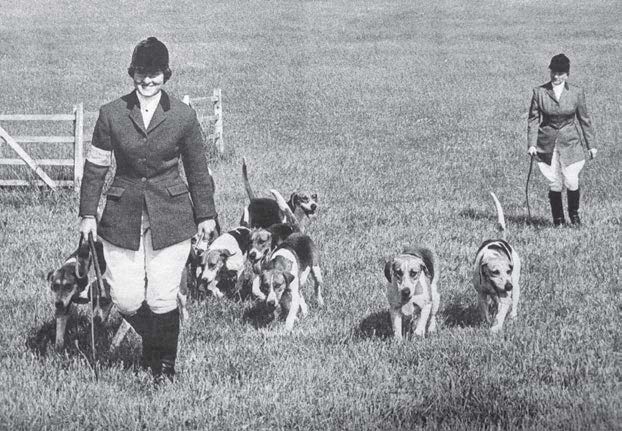
Hoping to land a position at Pine Needles, she reached out to Peggy Kirk Bell in June of 1963. There weren’t any jobs available, but Bell suggested Smith contact the Mosses at MCH. “They said, ‘Come on over. Work in the barn.’ Eventually, they thought I could feed and take care of the hounds,” Smith recalls. She adapted to the job with relative ease. “One of the hardest things was learning each individual hound’s name.”
Though Smith had not previously engaged in foxhunting, the Mosses knew an excellent rider when they saw one. When she was young Smith rode frequently on her cousins’ 10,000-acre ranch in New Mexico. Soon, she advanced up the MCH staff’s pecking order to be the hunt’s second whipper-in. Riding to the hounds and keeping the canines on task proved to be an excellent outlet for Smith’s sporting side.
There’s still a tree on the Walthour-Moss Foundation known simply as “Wiffi’s Tree,” the scene of an accident involving her. “During hunts on the foundation, I kept running into branches of this tree with my hat,” says Smith. “I decided to cut it down.” Perched on the back of a truck, she sawed off an offending limb but, when it fell, it hit the side of the truck and Wiffi, too. She managed to heave the whirring chainsaw away from her body but the falling branch broke her wrist — the left one, of course.
With the assistance of her co-workers and milled floorboards from trees on the Moss property, Smith built her dream cabin on her 82-acre parcel. Her friends relished their visits to the pastoral retreat she called Faraway. “They’d get so relaxed, they’d all fall asleep,” she says.
And the Bells still called on Smith to help out at Pine Needles, sometimes at the oddest of hours. “I remember Peggy calling me at 2 a.m. and pleading with me to show up at 8 a.m. the next morning to help with a group,” says Wiffi. “I told her I couldn’t because of having to do my morning chores at the farm. She said, ‘Can’t you do your chores earlier?’”
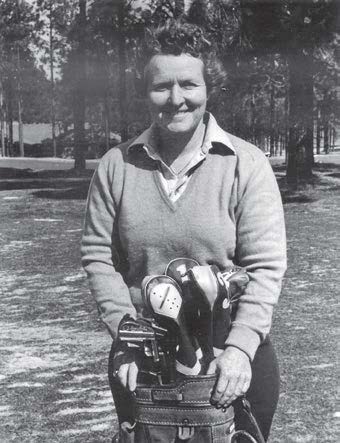
Smith continued in her roles at Mile-Away and with the hunt through the 1970s. After Pappy Moss died in 1976, wife Ginnie took over his role as MCH’s Huntsman. Within a few years, Mrs. Moss decided to leave that post and thus MCH looked for a new “Huntsman” to replace her. Smith hoped she would be considered for the position, but MCH instead chose a veteran professional who personally took charge of kennel operations, thus replacing Wiffi. Though she continued to perform other farm-related work for Mrs. Moss at Mile-Away, Smith’s reduced workload enabled her to devote more time teaching at Pine Needles alongside other noted golf instructors including Sally Austin and Ellen Griffin. Wiffi made teaching visits at Ben Sutton’s Golf School in Ruskin, Florida, and also served as a golf teacher at St. Mary’s school in Raleigh.
Then, in 1987, Smith encountered a group of visiting women golfers from Port Townsend, Washington, a small village on a peninsula jutting out into the Pacific Ocean. The more the women raved about Port Townsend, the more Smith became intrigued. “I had mountains and the Pacific coast on my mind,” she says.
Smith and a friend decided to check out Port Townsend but instead found themselves in Darrington, Washington — an inland, rural locale, and hardly a golf hotspot. There was one nine-hole course. Smith was enamored with Darrington’s ambience, however, and elected to move there. She gave lessons at the local driving range and became a traveling instructor at various Penny Zavichas Golf Schools throughout the West. She lived in Darrington until her move to Albuquerque to join her brother and his wife.
One cannot help but wonder what Smith might have achieved in golf absent her injury. “She was going to be a fantastic player,” said Hall of Famer Marilyn Smith. Peggy Kirk Bell said Wiffi “had one of the greatest golf swings and was longer than Mickey Wright.” Despite her extroverted, playful personality, Smith retreated from public view, happily living in remote areas, surrounded by pastoral beauty.
Having heard much about her cabin in Vass, I wanted to see it for myself but the property didn’t have a street address when Smith owned it. Frustrated in my efforts to locate it on my own, I called Smith from my car while driving slowly west on Youngs Road. I read off the names of the intersecting roads.
“That’s it. Turn left!” she finally urged.
I made my way to the front door of a log home where I was greeted by the owner, Bonnie Caie. “Did this cabin once belong to Wiffi Smith?” I asked.
“Oh, yes, and for the 25 years we’ve owned this place I’ve always hoped she might stop by and tell us about her time here,” said Caie.
“Well, I’ve got Wiffi right here on the phone. Talk to her.”
The two women chatted until my cellphone nearly ran out of juice. As they talked, I gazed around the property, mesmerized by the shimmering pond, the well-tended paddock, and towering pines. It was clear what a wonderful, restful retreat Wiffi had built. When later I mentioned this to her, she asked me, “Did you fall asleep?”
